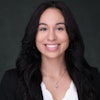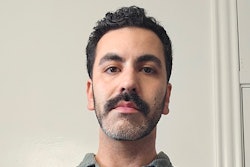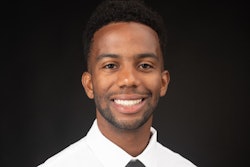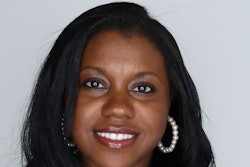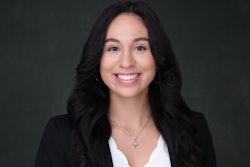
Jordan Ealy counts herself among the stargazers who delight in watching specks of light twinkle against the darkness of outer space. But her scholarship focuses on those stars she can barely see.
“Yeah, I study small stars,” says Ealy, a Ph.D. candidate in astronomy at the University of Maryland, College Park.
“M dwarfs are the most numerous stars in our galaxy even though you wouldn’t be able to see them if you just went outside,” she explains. “Their small sizes and cool temperatures mean we can’t see them with the naked eye, but they are also the stars that are most likely to host planets outside of our solar system.”
Ealy studies the power and frequency of magnetic activity on low-mass stars. By studying the exoplanet systems, she says, scientists learned they cannot just scale down the Sun in models to simulate conditions on those planets.
“Getting a better idea of how the variability of these stars changes over their lifetimes and how that informs our models of developing planets is the goal of my thesis,” says Ealy. “It’s a huge question with lots of different factors involved, and my work is just a piece of that.”
Aspiring to become a researcher and science communicator, Ealy is driven to understand humanity and science’s place in the world as it is.
“The work that I am doing is actively contributing to that,” she says. “It has a tendency to inspire, and I really want to make sure that we don’t lose that, especially with everything that’s going on at the moment.”
Dr. Katy Wimberly, an astrophysicist and an assistant professor at California State University, San Bernardino, supports Ealy’s ambition.
“Even as a graduate student, she’s doing critical research looking into the star-planet connection and pushing forward our knowledge in this important area to learn more about exoplanets and the habitable zones in other solar systems to find life outside of our own,” says Wimberly.
“She expertly combines her passion for astrophysics with her passion for community by working to improve institutional systems and cultural dynamics to create more equitable and inclusive spaces,” she continues. “She’s leading the way to become the type of scientist we need — excelling in both scientific research and as a force creating positive change.”
Ealy looks to Wimberly, among others, as an example of her possibilities.
The San Francisco Bay Area native developed her passion for astronomy at San Diego State University, where she earned a bachelor’s degree in astronomy with a mathematics minor, before obtaining a master’s degree in astronomy from the University of Maryland.
“It wasn’t until I got into my physics and calculus classes that I started making the connections between what I was learning and what research was meant to be,” she says. “Learning wasn’t just something where I was just reproducing what people know but actually being able to see what we don’t understand and be a part of figuring it out.”
Ealy says she has been intentional about serving science and integrating it into her community — a mission aligned with Cal-Bridge (a scholarship program supporting underrepresented minority students of certain sciences interested in pursuing a Ph.D.).
“A huge part of me actually pursuing astronomy as a career came from my community,” Ealy says. “I found my home in Cal-Bridge and the Black Student Science Organization. I made lifelong friends while being absolutely inspired by their drive and outlook on the world around them. Academia can be incredibly disconnected from the world around it, but my community keeps me grounded.”
Ealy credits her mentors and community with helping her be unafraid to express herself through her work and ensuring any talk, presentation, or poster she makes is equal parts science and personality.
“It’s entirely possible to communicate your science without sterilizing your work,” says Ealy. “Science is done by people, and communicating in that lens helps everyone understand it.”

